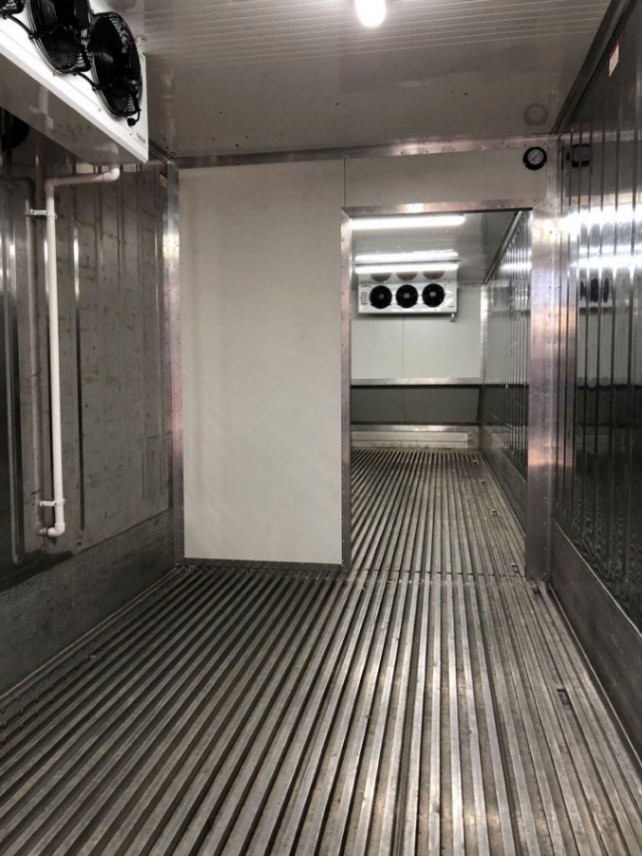Finding the best way to transport or store perishable and temperature-sensitive items can be a difficult task. With the right container, however, you can transport these goods with ease. Refrigerated containers utilise refrigerated insulation to maintain a specific temperature inside the unit while mitigating external changes in environmental conditions, such as ambient temperature and humidity levels. This ensures your cargo is kept at the perfect temperature for its entirety inside the container. To help you make the best decision on your moving and storage needs, here are some things you should look for in your refrigerated storage container.
Is it the right fit for your needs?
It’s crucial to know exactly what you need from a refrigerated storage container to get the most out of it. It’s unnecessary to obtain a container that is far too big for your needs and will end up costing you extra. Refrigerated containers can range from 20 to 40ft, so when selecting the correct size for your container, speak with your container vendor for the best fit.
Transportation documents and certifications
Before committing to a cold refrigerated storage container, make sure you know what certifications and documents (such as UN 4G) the unit has. This will ensure it is accepted as seaworthy and cargo worthy and that it meets all industry standards. If it doesn’t have the proper certifications, it may need additional work, or you may need a different container entirely.
What’s it made from?
The quality of materials your container is made from can significantly impact its durability and capacity to perform its job. Containers made of steel will last you longer and hold more weight than those made from other materials. Other container features such as insulation thickness, door seals, and latches also contribute to the quality and function of your unit. Their sturdiness and flexibility are just some of the great benefits of refrigerated shipping containers.
Will you need interior lighting or customisations?
Something that isn’t always apparent is whether your container will need interior lights or not. All containers can be customised with lighting, partitions, windows and more depending on your needs. You can add this to any unit, so make sure your container is equipped with the right accessories for your particular moving and storage needs.
Container doors on refrigerated containers are also an essential factor in choosing the best one for you. Ensure they have gasket seals, which help prevent air from leaking out of the container during transit. In addition, the hinges on the doors should be durable and functional. This will ensure that they can withstand repeated opening and closing while maintaining a good seal from the elements.
Size up your options when looking into refrigerated shipping containers for sale. Whether you’re transporting refrigerated goods or storing them, we hope these tips will help guide you in choosing the best container for your needs.

1. Site Selection
If you are not mounting the container for the long term, choose a spot where the ground is even and the soil firm and compacted so that it will support the frame of the container. If your site is rough or slanted you can add a layer of gravel or small stones to keep the container stable and secure.
2. Surroundings
If your container is going to remain in place for a length of time, it can be valuable to pave the surrounding area prior to installation. This will provide a solid firm base for your structure and will enable you to utilise the outer area of the container more easily.
3. Vehicle Access
If your site is in a position behind other buildings then you may have trouble getting your container to your site. There are options to have your container dropped in situ’ by a crane but this is expensive. If your site is accessible by vehicle you will keep delivery costs down. Setting up storage containers in Sydney, where the topography varies, it is a great idea to prepare a level area prior to delivery.
4. Weather conditions
It is ideal to have your container delivered on a day free of rain, after a dry spell. Installing your container directly onto sodden earth may lead to sinkage and misalignment of your final structure. If you are in a particularly rough area you may need to secure your shipping container to the ground, but in most circumstances, the natural weight of the container will hold it firmly in place.
5. Ventilation
If you are concerned about water or drainage around the site of your container then it may be worthwhile setting the container down on concrete blocks. This will keep it raised from ground level, free of moisture and well ventilated.
Betta Storage are your local Sydney specialists in movable new and used storage containers. Contact us to discuss your requirements and let us help you choose the right container for your needs.

